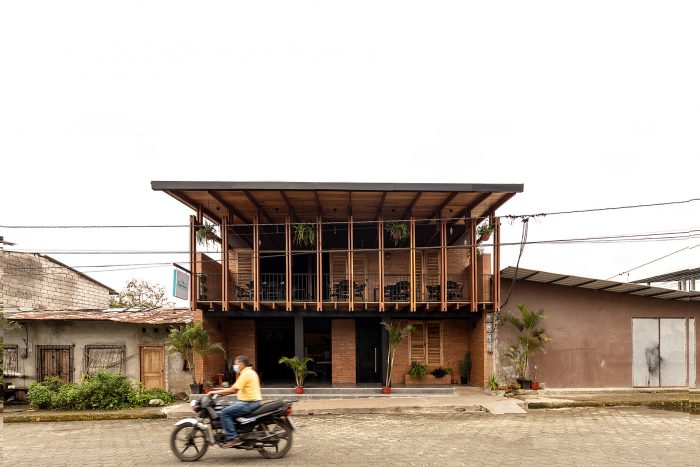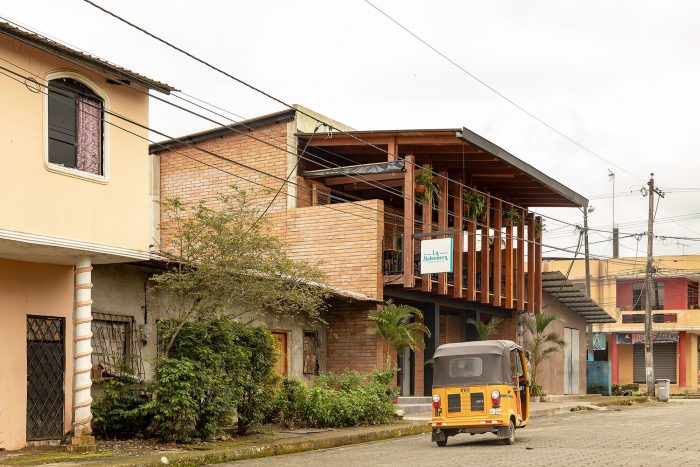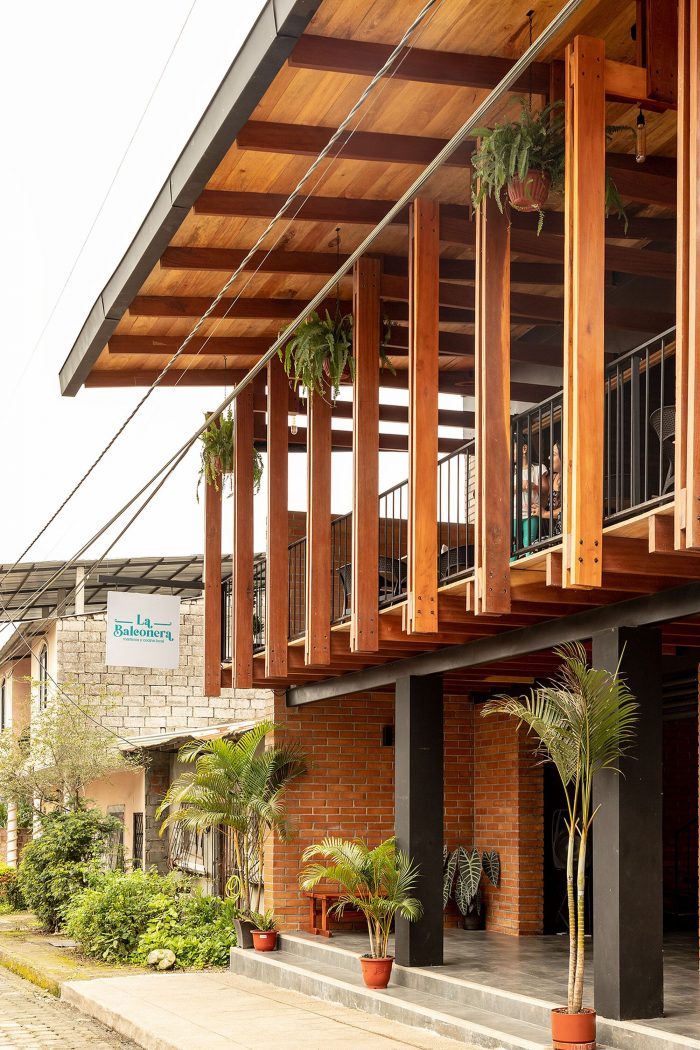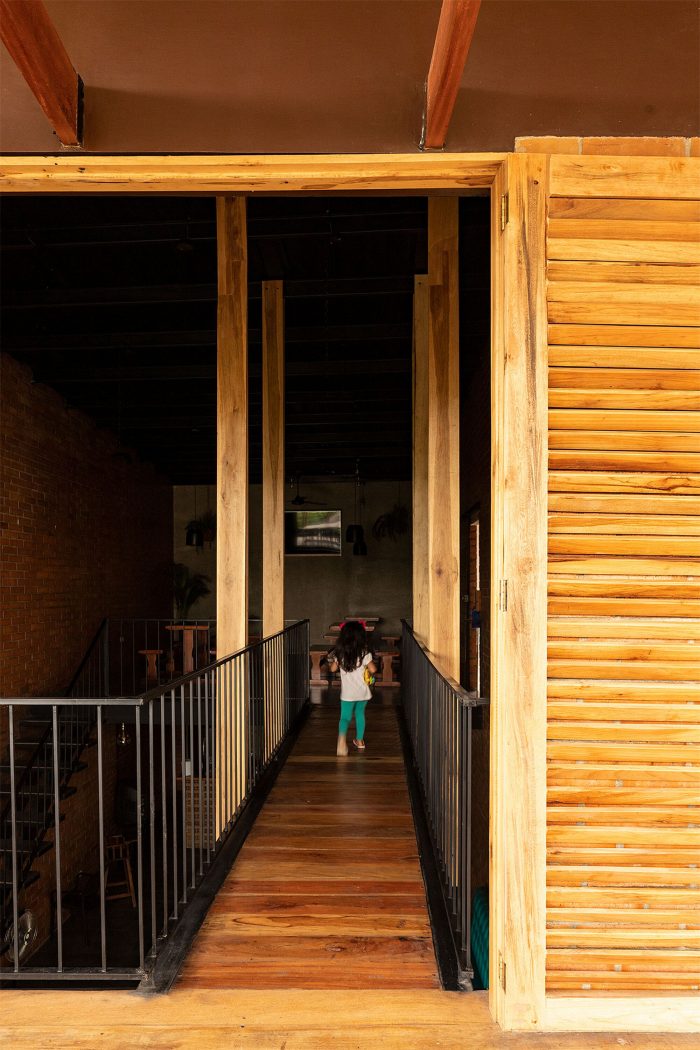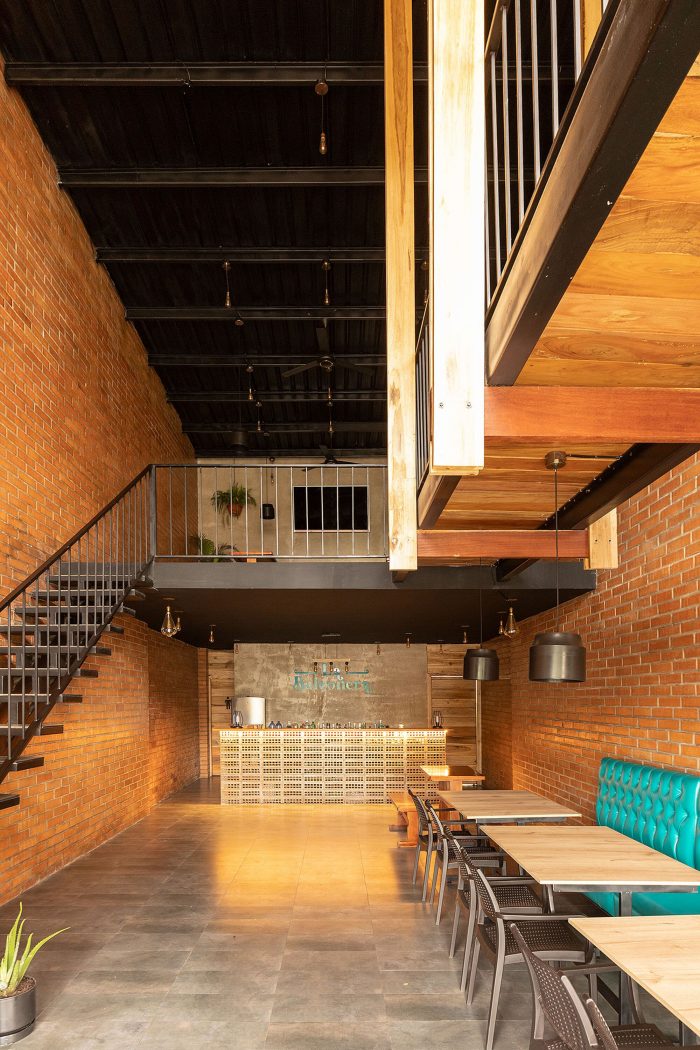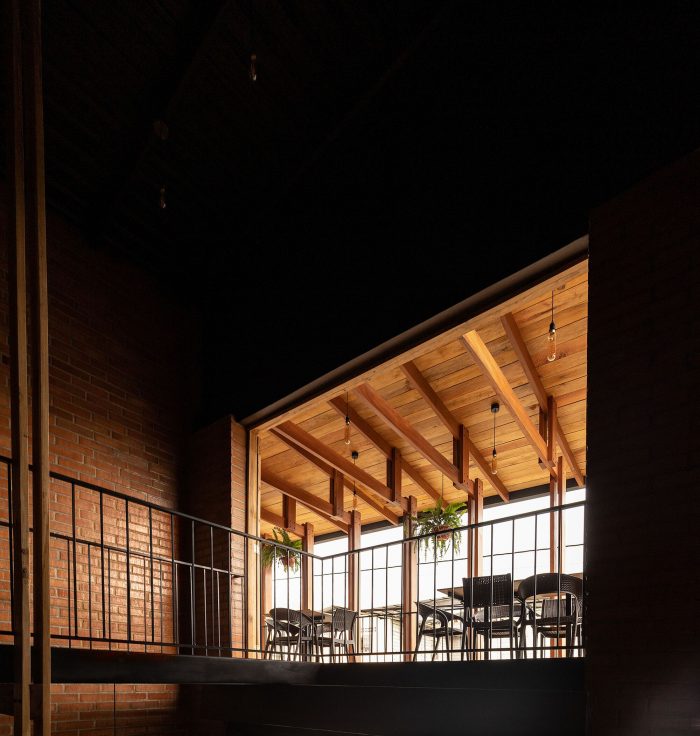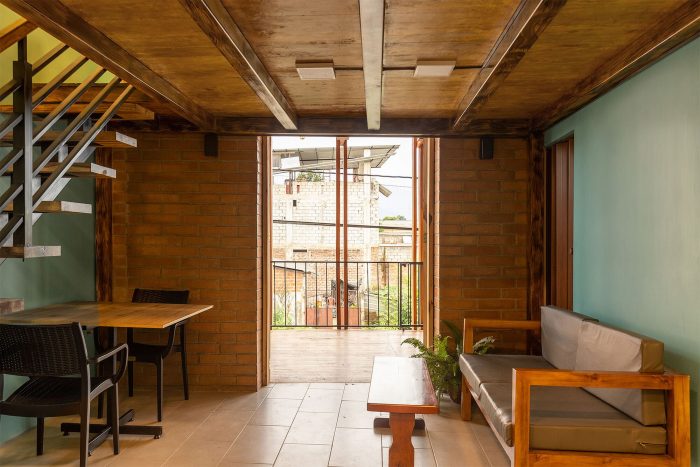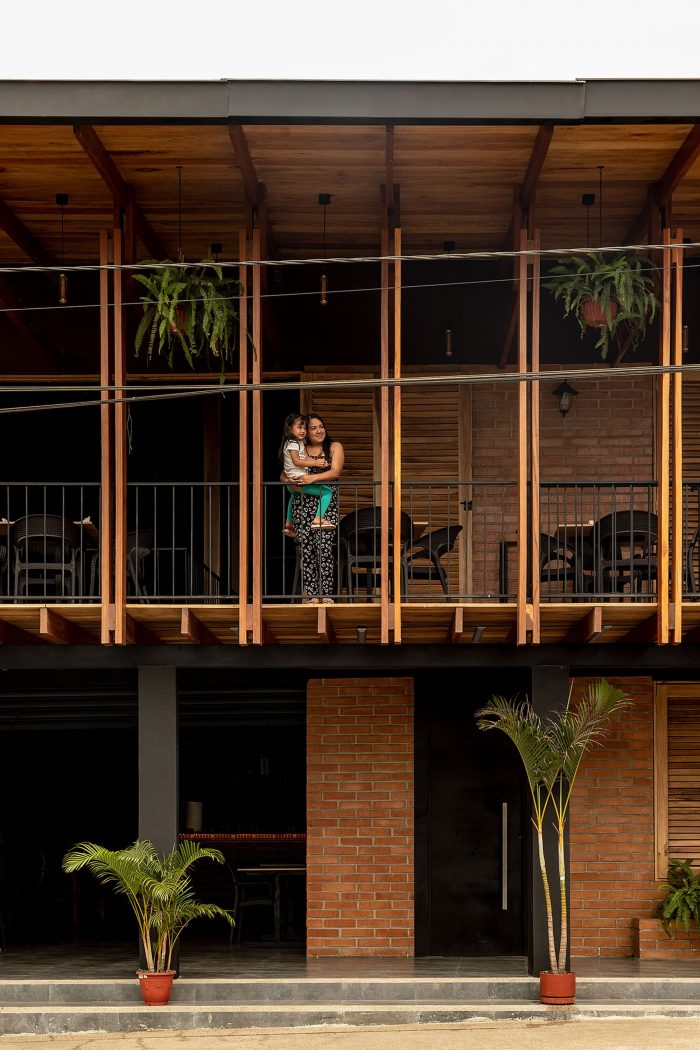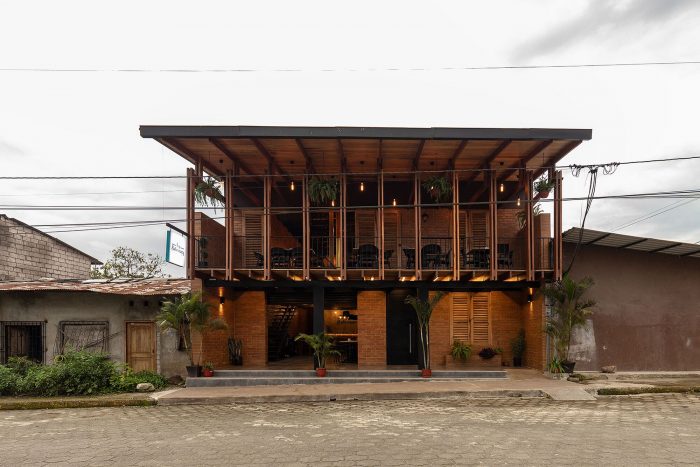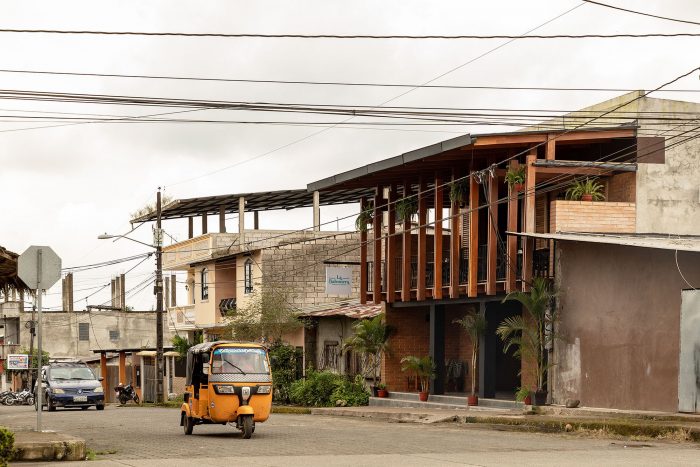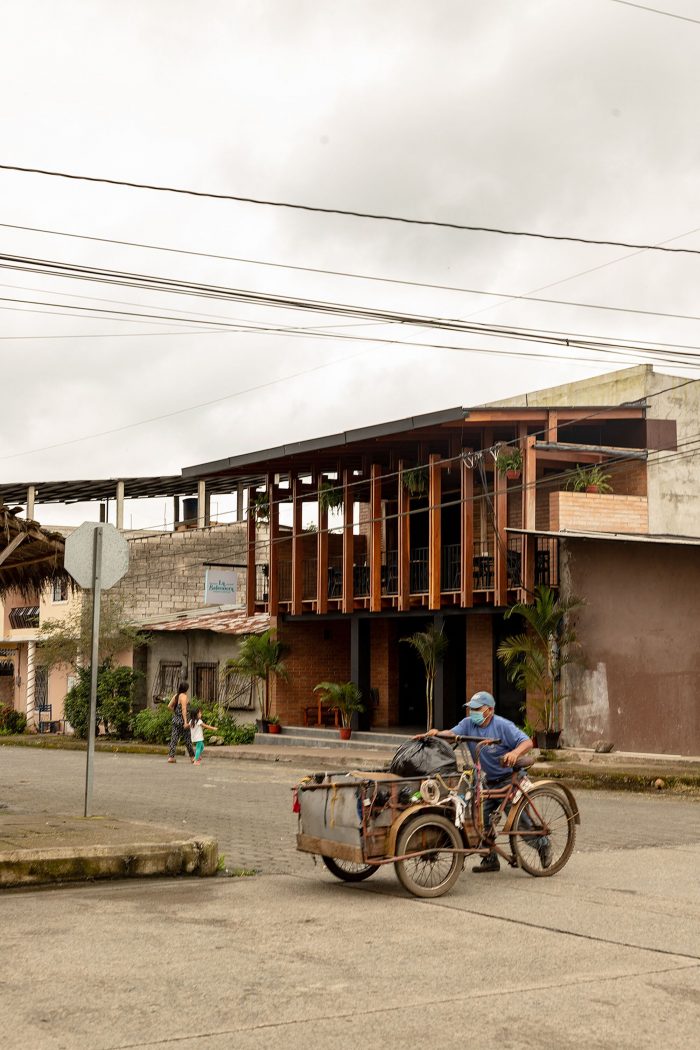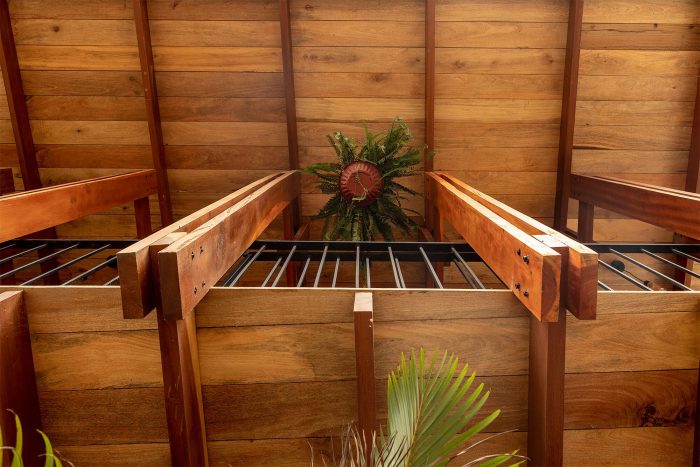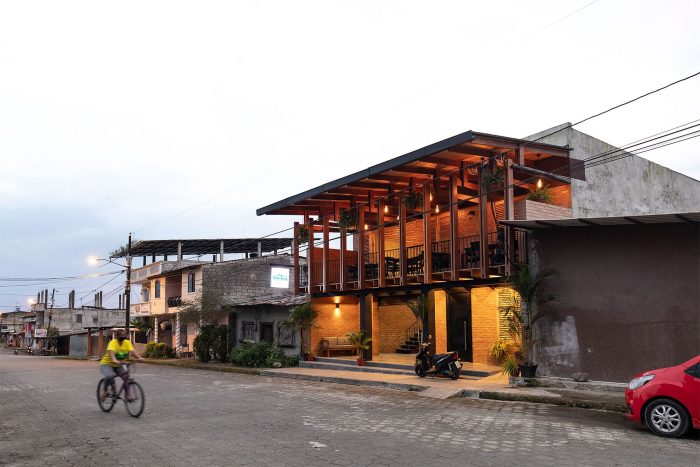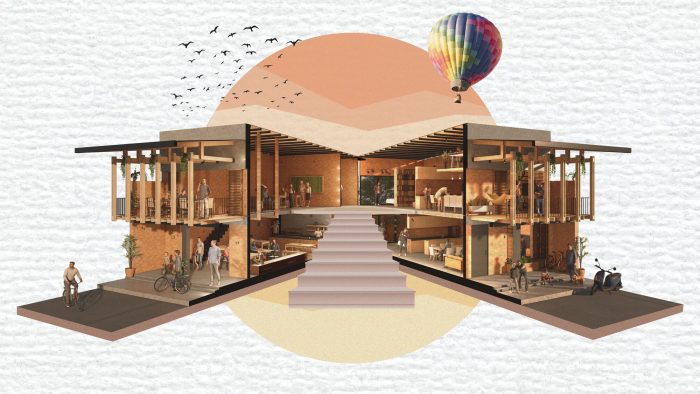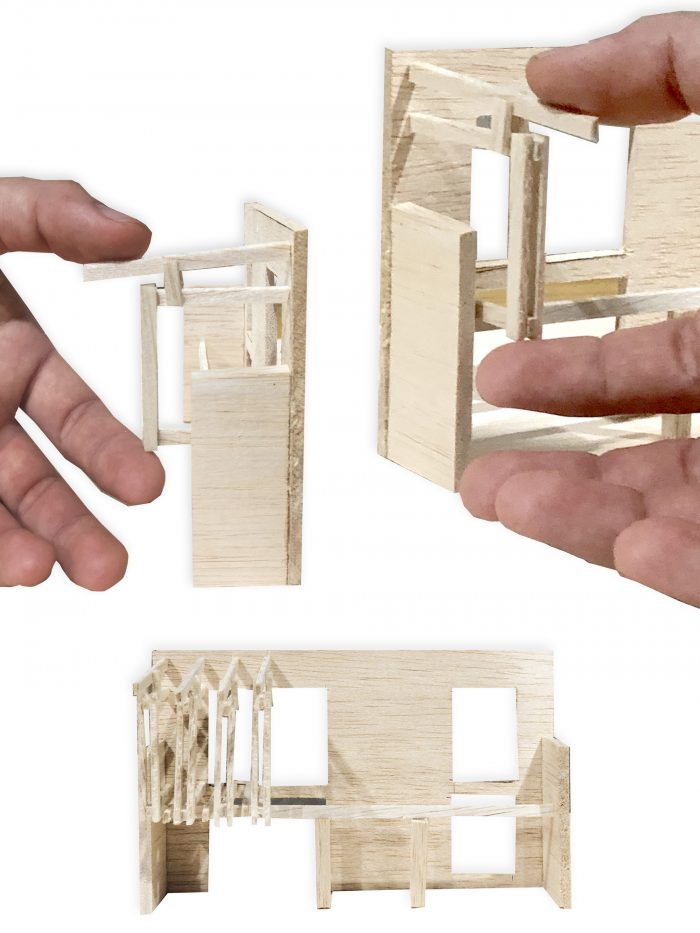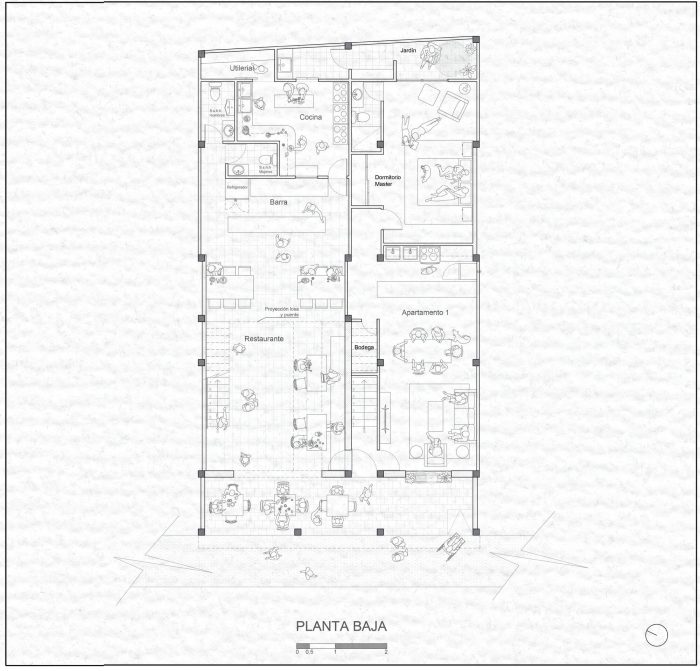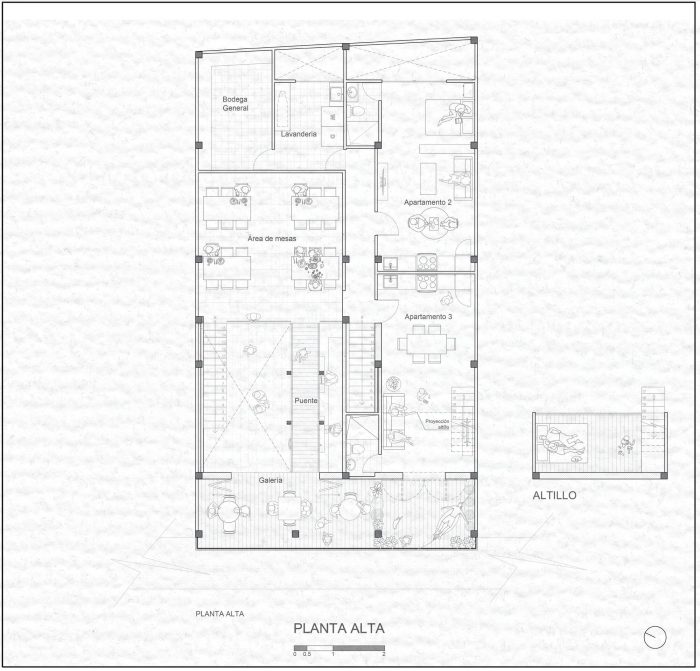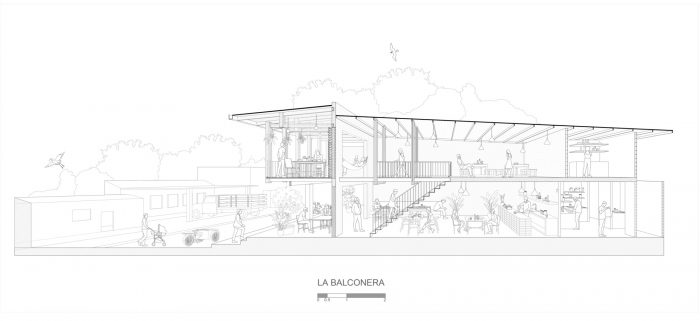位于厄瓜多尔Babahoyo的卫星城市Montalvo,约有1.6万居民,其城市发展基于水平、分散和低密度。这导致了对传统组织系统的放弃,如画廊和门廊,它们促进了与街道和社区生活的联系。在这个意义上,它试图恢复私人和公共使用之间的联系。
Located in the city of Montalvo, a satellite city of Babahoyo, Ecuador, with approximately 16 thousand inhabitants, has based its urban growth on a horizontal, dispersed, and low density. This has led to the abandonment of traditional organizational systems such as the gallery and the porch that promoted the connection with the street and community life. In this sense, it seeks to recover the link between private and public use.
一个当地的家庭发现有必要将他们19米x11米的地块改造成城市中心的住宅和商业空间,在这里,一家餐馆和三间对应于母亲和女儿的房子将被经营,促进在同一空间内的共存和工作。为此,建议将该方案分成两半:左边是餐厅,右边是住房。
A local family finds the need to transform their 19mx11m lot into a residential and commercial space within the urban center, where a restaurant and three houses corresponding to the mother and daughters will operate, promoting coexistence and work together within the same space. For this purpose, it is proposed to divide the program in half: restaurant to the left and housing to the right.
商业区包括一个厨房空间和一个双层高度,它由一个门廊桥横向连接,将食客的空间与室外的画廊连接起来。住宅区包括一个一楼的公寓和两个上层的公寓。该方案的两个部分都通过折叠和铰链格子门与室外画廊相连,其共享使用将取决于餐厅的活动。
The commercial area comprises a kitchen space and a double-height, which is connected horizontally by a porticoed bridge that links the spaces for diners with the outdoor gallery. The residential area comprises one first-floor apartment and two upper-floor apartments. Both parts of the program are linked to the outdoor gallery through folding and hinged lattice doors, whose shared use will depend on the activity of the restaurant.
该项目提出了一个配置外部画廊的模块袋系统;通过木板和金属板的横梁和张力来实现。
The project proposes a system of modular pouches that configure the exterior gallery; by means of beams and tensors of wooden planks and metal plates.
La Balconera为城市中心的多样化提供了一种新的可能性,通过恢复画廊和传统门廊作为配置元素,促进与街道的联系,从一个集体和生产的栖息地。
La Balconera offers a new possibility of diversifying urban centers, through the recovery of the gallery and the traditional porch as configuring elements that promote the link with the street, from a collective and productive habitat.
Architects: Natura Futura Arquitectura
Area : 400 m²
Year : 2022
Photographs :JAG Studio
Manufacturers : Dipac, Dolmen, Maderas Pedro
Illustration : Espacio MeM
Collaborator : Flor Pazmiño


